 |
 |
 |
| |
Contribution of Immunodeficiency to Coronary Heart Disease:
Cohort Study of HIV-infected and HIV-uninfected Kaiser Permanente Members
|
| |
| |
Reported by Jules Levin
CROI 2011 March 2 Boston
from Jules: again I think this study oversimplifies the affect of immune function & CD4 count on the risk for heart disease, their findings underestimate the risk. There are so many other factors not considered in this analysis that have ben the subject of much study & reports at this CROI, as I stated in previous reports including activation, inflammation, immune senescence, microbial translocation & on. Of note CD4 nadir <200 is a risk factor in this study!
Daniel Klein, Wendy A. Leyden, Lanfang Xu, Chun R. Chao, Michael A. Horberg, William J. Towner, Leo B. Hurley, Charles P. Quesenberry, Michael J. Silverberg
1 Kaiser Permanente Northern California, Hayward, CA; 2 Kaiser Permanente Northern California, Oakland, CA; 3 Kaiser Permanente Southern California, Pasadena, CA; 4 Kaiser Permanente Southern California, Los Angeles, CA
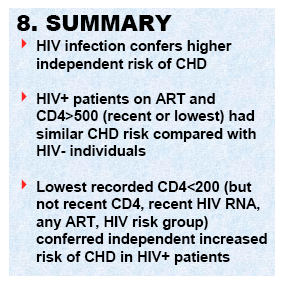
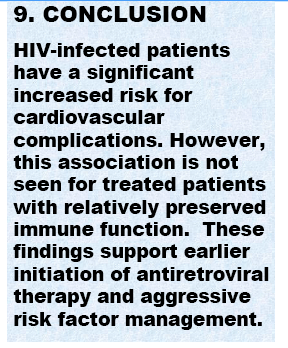
ABSTRACT
Background: As the prognosis for people living with HIV has improved, greater attention has been directed towards monitoring the long term complications from treatment and infection. Our objective was to evaluate whether coronary heart disease (CHD) rates have approached rates in the general population.
Methods: We matched adult HIV+ members of Kaiser Permanente (KP) California health plan to HIV- members (1:10 ratio) on age, sex, medical center and year of start of follow-up. We searched hospitalization records to identify members with documented CHD (ICD- 9: 410x-411x, 413x-414x). The cohort was followed from first KP enrollment after 1996 until the earliest of CHD event, death, KP disenrollment, or 12/31/2008. CHD rates among HIV+ members stratified by ART use, recent and lowest KP-recorded CD4 were compared to rates among HIV- KP members. Adjusted rate ratios (RRs) for any CHD diagnosis and for MIs were obtained from Poisson regression models adjusting for age, sex, race, tobacco use, alcohol/drug abuse, obesity, diabetes, and use of lipid lowering and hypertension therapy. An additional analysis of only HIV+ individuals examined the effects of ART use, recent HIV RNA, and recent and lowest recorded CD4 on CHD.
Results: 20,775 HIV+ and 215,158 HIV- members contributed 90,961 and 1,133,444 person-years, respectively. HIV+ had 399 CHD events (447/100,000 py) including 248 MIs. HIV- had 3,463 CHD events (311 cases/100,000 py) including 1,825 MIs, for an adjusted CHD RR of 1.2 (95% CI: 1.1-1.4; p<0.001), and an adjusted MI RR of 1.4 (95% CI: 1.3-1.7; p<0.001). HIV+ patients on ART and CD4>500 had similar CHD risk compared with HIV-. In the HIV+ only model, the only significant HIV-related factor associated with an increased risk of CHD was lowest KP-recorded CD4<=200 (RR=1.3 [95% CI: 1.0-1.6, p=0.022).
Conclusions: Adjusting for traditional risk factors, HIV+ individuals have a statistically significant increased risk for cardiovascular complications. However this association is not seen for patients with relatively preserved CD4, possibly supporting earlier initiation of ART.


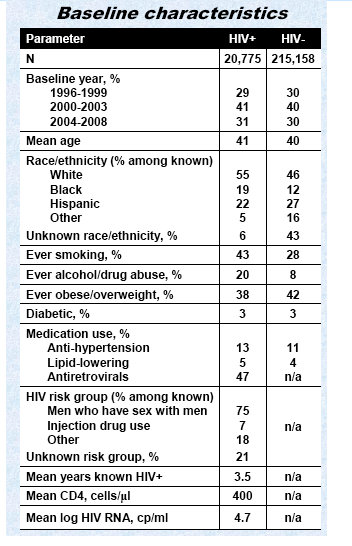
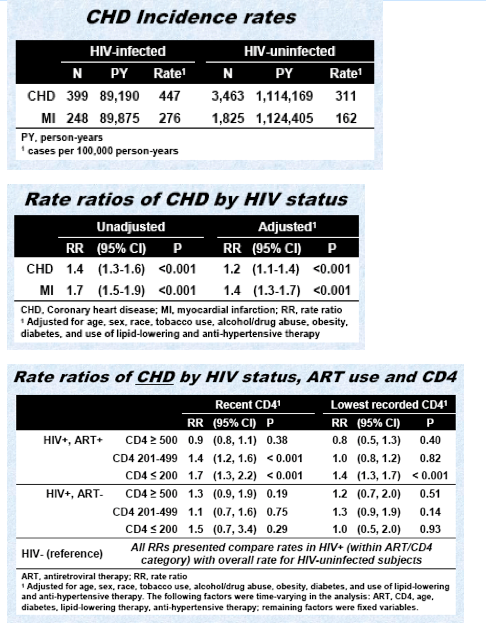
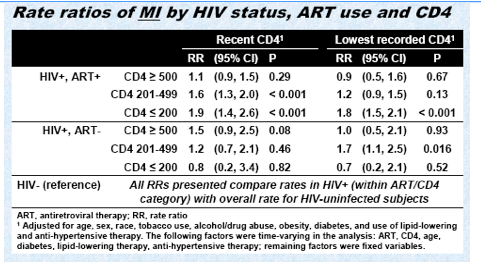
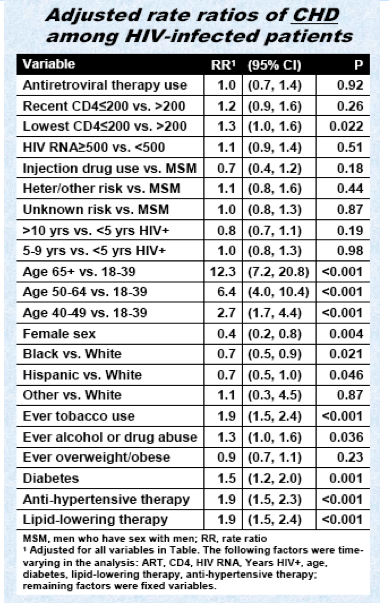
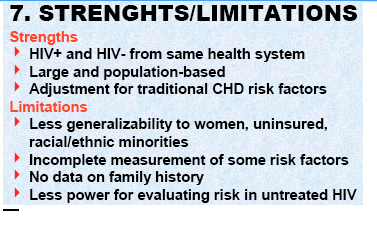
|
| |
|
 |
 |
|
|